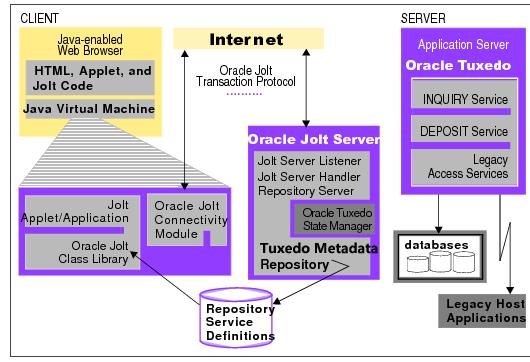How Oracle Jolt Works
Oracle Jolt connects Java clients to applications that are built using the Oracle Tuxedo system. The Oracle Tuxedo system provides a set of modular services, each offering specific functionality related to the application as a whole.
The end-to-end view of the Oracle Jolt architecture, as well as related Oracle Tuxedo components and their interactions, is illustrated in the figure “Figure 1-1”.
Using the following figure as an example, a simple banking application might have services such as INQUIRY, WITHDRAW, TRANSFER, and DEPOSIT. Typically, service requests are implemented in C or COBOL as a sequence of calls to a program library. Accessing a library from a native program means installing the library for the specific combination of CPU and operating system release on the client machine, a situation that Java was expressly designed to avoid. The Jolt Server implementation acts as a proxy for the Jolt client, invoking the Oracle Tuxedo service on behalf of the client. The Oracle Jolt Server accepts requests from the Jolt clients and maps those requests into Oracle Tuxedo service requests.
Figure 1-1 Oracle Jolt Architecture
